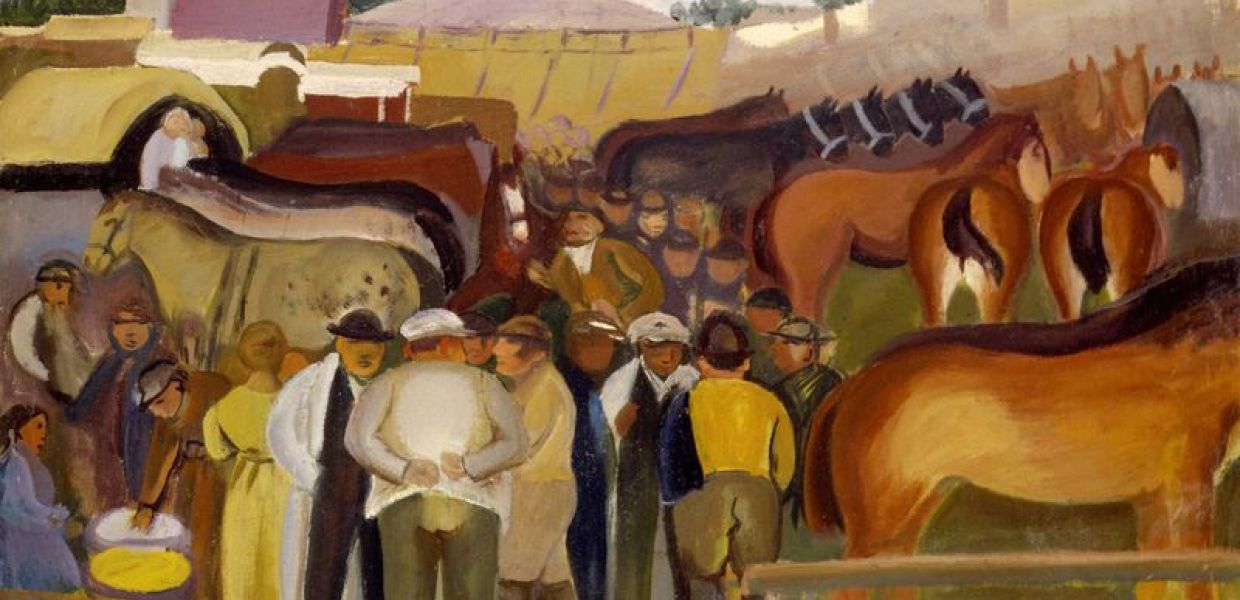Choosing a country's artworks for Europeana 280: Lithuania

Ministries of culture together with museums and galleries all over Europe have been busy selecting their top artworks for the Europeana 280 collection. Over the next weeks we'll be discovering a little bit more about how and why particular images were selected and the stories behind some of the choices.
Here, Europeana 280's Exhibition Coordinator Ann Maher chats to Lithuania about their nominations. We’ll start sharing the nominated works from each country soon - so stay tuned!
When countries choose just ten pictures representing their artistic heritage, we get the opportunity to brush up on our knowledge of Europe’s connected political and social histories. Some vivid choices from Lithuania include images created by artists working through turbulent times and sometimes a long way from home. So how did Lithuania make its selection for Europeana 280?
The Lithuanian Art Museum was nominated by the Ministry of Culture to coordinate the Lithuanian submissions process for Europeana 280. Donatas Snarskis, project specialist at the museum, describes how they went about it.
Lithuania’s selection process begun after the Ministry of Culture sent an initial request to national and regional digitisation centres inviting curators to submit possible entries within their own fields. Those involved included libraries and archives, and institutions within the museums sector. The Church Heritage Museum was also approached. The Ministry of Culture then made the final selection of 10 and the Lithuanian Art Museum was nominated to coordinate from there.
To help them make their nominations, what brief did the Ministry give Lithuanian institutions? “The general selection criteria for Lithuania were: artworks held in Lithuania; artworks by the most influential Lithuanian artists; and artworks that represented important stages in the history of Lithuanian art,” explains Snarskis. Other than these, curators were at liberty to come up with their own choices – something shown by the range of movements covered in the selections which include Lithuanian baroque, classicism, romanticism, realism and expressionism. They show artists embracing and interpreting new ideas from their travels or absorbing new influences as members of the Lithuanian diaspora.
A work of art is a new reality
In the 1930s, a thriving art scene gave rise to the ‘Ars’ group whose members were inspired by their studies in Paris. At their first exhibition in 1932, they proclaimed in true manifesto style: “A work of art is a new reality. We desire to enrich our lives with new values” (National Gallery of Art, Lithuania). In the Soviet-occupied times that were to follow, a whole new range of values came into force.
 Turgaus scena, Pranas Domšaitis (1947). Lithuanian Art Museum, CC BY.
Turgaus scena, Pranas Domšaitis (1947). Lithuanian Art Museum, CC BY.
A 1918 work was selected for Europeana 280 from expressionist Pranas Domšaitis who became one of the most famous painters of the Lithuanian diaspora. This later image shows the influence of his rural upbringing (he was a farmer until the age of 27) and his strong roots, even after emigration to South Africa in 1947: “Lithuanian blood does not deceive, just as my paintings are truly Lithuanian.”
Over in Germany, Lithuanian expressionist Pranas Domšaitis (Franz Domscheit) was suffering from attempts to use art as a propaganda tool. He was included along with Munch, van Gogh, Nolde, Kirchner, Mueller, Dix, and many others, in the 1937 Entartete 'Kunst (degenerate art) exhibition. His work was removed from German galleries a year later and he emigrated to South Africa.
Unique figure in European arts
A more serene choice is one of Europe’s most unusual artists. But which work to choose? It’s the dilemma shared by all Europeana 280 selectors, as Raimonda Norkute, Head of Centre for digitisation, National M. K. Čiurlionis Museum of Art explains: “How were we to select only a few works of art from the collections of the National M. K. Čiurlionis Museum of Art (from nearly a half a million exhibits)? Which one is the most representative of Lithuanian culture? The answer is in the title of the museum – the great artist and composer – Mikalojus Konstantinas Čiurlionis.”
In a short career lasting some 15 years, Čiurlionis composed and created hundreds of musical compositions, paintings and etchings while finding time to experiment with photography, be actively involved in the Lithuanian national movement, and in true renaissance-man style, engage in many other spheres taking his interest from geology to astronomy (he has an asteroid named after him).
The Europeana 280 selection (Sonata no. 6) is one of seven pictorial Sonatas painted by M. K. Čiurlionis, and according to Raimonda Norkute, one of his most mature works and most musical creations: “It is full of wonderful interplays of colours, a variety of rhythms and a powerful imagination. This Sonata reveals a magnificent sense of music and Čiurlionis’ visionary approach.”
We look forward to sharing more about each of the fascinating artworks selected for the Europeana 280 campaign soon. In the meantime, follow the conversation on Twitter via #Europeana280.
